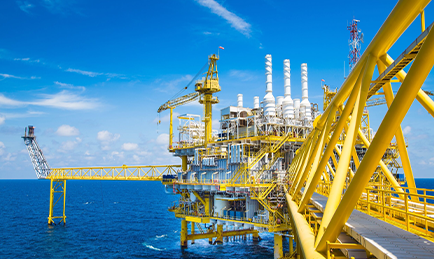- Afrikaans
- Albanian
- Amharic
- Arabic
- Armenian
- Azerbaijani
- Basque
- Belarusian
- Bengali
- Bosnian
- Bulgarian
- Catalan
- Cebuano
- Corsican
- Croatian
- Czech
- Danish
- Dutch
- English
- Esperanto
- Estonian
- Finnish
- French
- Frisian
- Galician
- Georgian
- German
- Greek
- Gujarati
- Haitian Creole
- hausa
- hawaiian
- Hebrew
- Hindi
- Miao
- Hungarian
- Icelandic
- igbo
- Indonesian
- irish
- Italian
- Japanese
- Javanese
- Kannada
- kazakh
- Khmer
- Rwandese
- Korean
- Kurdish
- Kyrgyz
- Lao
- Latin
- Latvian
- Lithuanian
- Luxembourgish
- Macedonian
- Malgashi
- Malay
- Malayalam
- Maltese
- Maori
- Marathi
- Mongolian
- Myanmar
- Nepali
- Norwegian
- Norwegian
- Occitan
- Pashto
- Persian
- Polish
- Portuguese
- Punjabi
- Romanian
- Russian
- Samoan
- Scottish Gaelic
- Serbian
- Sesotho
- Shona
- Sindhi
- Sinhala
- Slovak
- Slovenian
- Somali
- Spanish
- Sundanese
- Swahili
- Swedish
- Tagalog
- Tajik
- Tamil
- Tatar
- Telugu
- Thai
- Turkish
- Turkmen
- Ukrainian
- Urdu
- Uighur
- Uzbek
- Vietnamese
- Welsh
- Bantu
- Yiddish
- Yoruba
- Zulu
Exploring the Benefits and Applications of Seating Nipple Tubing in Modern Industry Solutions
Understanding Seating, Nipple, and Tubing in Oil and Gas Operations
In the oil and gas industry, the terms seating, nipple, and tubing play critical roles concerning the extraction and transport of hydrocarbons from beneath the Earth’s surface. Understanding these components is essential for professionals in the field, as they are integral to ensuring efficient operation and maintaining safety standards.
Seating
Seating refers to the installation process where various components, such as valves or pressure control devices, are positioned correctly within the wellbore. Effective seating is crucial because it ensures that the equipment functions as intended. A well-seated component minimizes the risk of leaks and maximizes the integrity of the well. Factors such as the type of seal used, the material properties of the components, and the ambient pressure within the wellbore all influence the success of the seating process.
Moreover, proper seating can also affect the longevity of the equipment. Components that are poorly positioned or installed can experience uneven stress distribution, leading to premature wear and potential failure. This not only results in increased costs for repairs and replacements but can also endanger personnel and the environment if a catastrophic failure occurs.
Nipple
In the context of oilfield operations, a nipple is typically a short piece of pipe that connects different sections of pipe or equipment within a well. Nipples are critical in various configurations, serving roles such as connecters, reducers, or adaptors in the wellhead assembly. One of the most common types is the casing nipple, which helps transition between the casing and tubing sections.
seating nipple tubing

Nipples are designed to provide robust connections that can withstand high-pressure conditions often found in oil and gas production. They are engineered from durable materials like steel or composite materials that resist corrosion and abrasion. The design and installation of nipples are subject to strict industry standards to ensure that they can handle the extreme conditions of well operations.
Tubing
Tubing is the conduit through which extracted oil and gas flow to the surface. It is a critical element of well construction, often running from the wellhead down to the reservoir. Tubing comes in various sizes and grades, depending on the specific application, the depth of the well, and the characteristics of the hydrocarbons being extracted.
The choice of tubing material is essential, as it must withstand not only pressure but also potential corrosive elements present in the produced fluids. Common materials include carbon steel and stainless steel, each selected based on the corrosion environment and mechanical strength required. Tubing must also be engineered for thermal expansion and contraction due to temperature variations, as these can induce stresses that compromise the tubing's integrity.
Proper installation and maintenance of tubing are essential for the safe and efficient extraction of resources. Regular inspections and maintenance schedules must be implemented to detect any issues early, preventing potential leaks or operational failures that could result in lost production or environmental damage.
Conclusion
In summary, seating, nipple, and tubing are fundamental components in oil and gas operations that significantly impact the efficiency and safety of hydrocarbon extraction. Each element must be carefully designed, selected, and maintained to ensure that operations proceed smoothly. Professionals in the industry must stay updated with the latest technologies and standards to optimize their practices and enhance the longevity and safety of their operations. Understanding these components is not just a technical requirement; it is a critical aspect of ensuring the sustainability and efficiency of oil and gas production.
-
Tubing Pup Joints: Essential Components for Oil and Gas OperationsNewsJul.10,2025
-
Pup Joints: Essential Components for Reliable Drilling OperationsNewsJul.10,2025
-
Pipe Couplings: Connecting Your World EfficientlyNewsJul.10,2025
-
Mastering Oilfield Operations with Quality Tubing and CasingNewsJul.10,2025
-
High-Quality Casing Couplings for Every NeedNewsJul.10,2025
-
Boost Your Drilling Efficiency with Premium Crossover Tools & Seating NipplesNewsJul.10,2025







